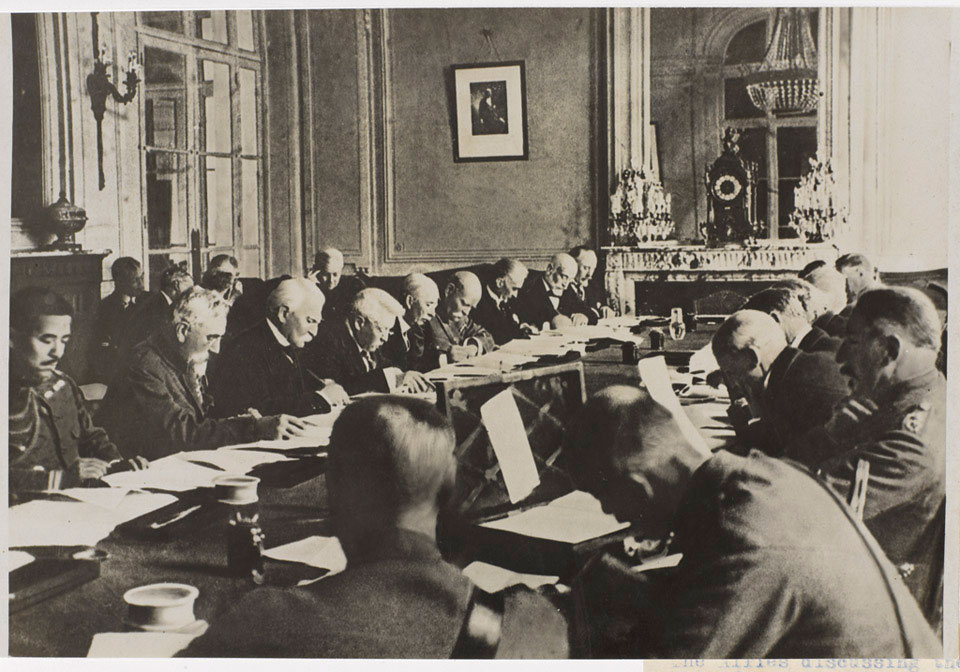
Online Collection
The Allies discussing the Armistice terms at Versailles, 1919
Photograph, Versailles Peace Conference, World War One, Peace (1918-1921), 1919.
Facing from left to right are seen: Colonel Nagai, General Marlo de Robilant, Sidney Sinnino, Vittorio Orlando, Colonel Edward Mandell House, General Tasker Bliss, Archin Closs, Eleftherios Venizelos and Milenko Vesnitch.
In the years immediately after the First World War a series of peace treaties were convened to bring hostilities formerly to an end. The most important of these was the Treaty of Versailles which dealt with Germany. The Allies' efforts at negotiating a satisfactory outcome were hampered by their divergent aims. Of greatest significance was the problem of reconciling the desires of the French for security and revenge with the aspirations of President Wilson of the USA to make a just and lasting peace.
In accordance with the provisions of the treaty Germany lost territory, her colonial empire and was subjected to a partial military occupation. Germany was also stripped of much of her military forces, obliged to pay large sums in reparations to the Allies for war damages and had to accept responsibility for causing the war. While Germany remained one of Europe's great powers, these terms still caused anger and resentment amongst the German people and provided fuel for the propaganda of right-wing groups, like the Nazis, who sought to overturn the treaty at the earliest opportunity. These feelings also resonated with many people in the Allied nations. This fostered a growing sense that Germany had been treated unjustly which, ultimately, served to undermine the will of the Allies to enforce the terms of the treaty. In failing either to permanently weaken or to fully reconcile Germany, the Treaty of Versailles failed to achieve the objectives of any of the Allied powers and created a legacy that would prove detrimental to the peace of Europe.
While historians continue to debate the nature and extent of the causal connection between the Treaty of Versailles and the outbreak of the Second World War a generation later, many contemporaries had a prophetic sense of this grim fate. Two notable critics were Marshal Ferdinand Foch, who declared 'this is not peace, it is an armistice for 20 years' and the economist John Maynard Keynes, wrote how the treaty would 'sow the decay of the whole of civilised Europe'.
From a collection of 193 British and Allied official photographs.
NAM Accession Number
NAM. 2007-03-7-5
Copyright/Ownership
National Army Museum, Out of Copyright
Location
National Army Museum, Study collection
Object URL
https://collection.nam.ac.uk/detail.php?acc=2007-03-7-5

